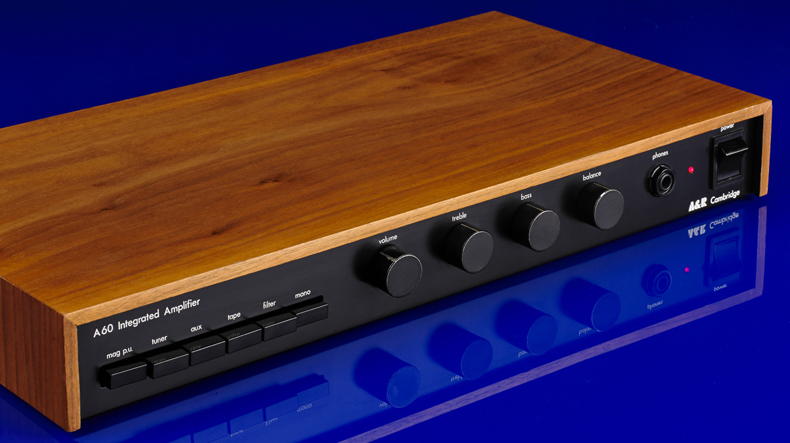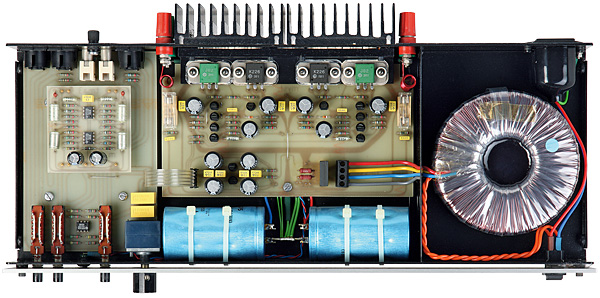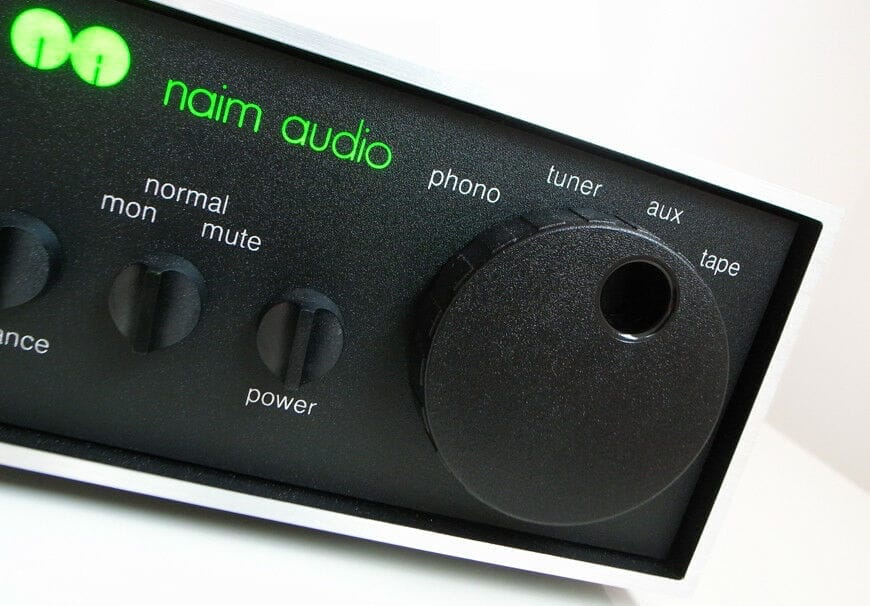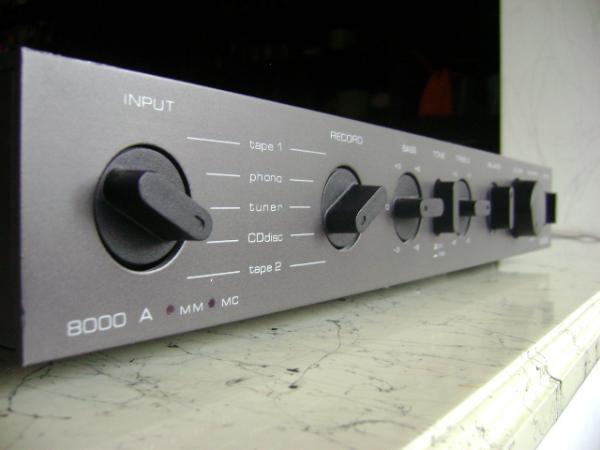Hitachi’s discovery and production of MOSFETs (Metal Oxide Silicon Field Effect Transistor) had a major role in the hi-fi world that was just around the corner in the mid-1970s. The world had only been in solid-state for fifteen years and was still on a long and steep learning curve. However, Hitachi’s new power MOSFET output devices solved many of the difficulties associated with traditional power transistors in one fell swoop. They provided power that was both cheaper and more reliable than ever before, as well as potentially better sounding. It was such a significant leap forward that most amplifiers from the 1980s and 1990s – and even many today – employ direct successors of these Hitachi devices. It was an epoch-making technology that made power more accessible to the masses.
What made the technique so unique? MOSFETs switch by voltage control, which requires far less energy and, as a result, produces less heat. Conventional transistors work by allowing a small flow of current to control a larger one, but MOSFETs switch by voltage control, which requires far less energy and, as a result, produces far less heat. As a result, a given amount of silicon produces a larger output than traditional bipolar power transistors, while also reducing noise and distortion. As a result, simpler, shorter signal routes can be used to achieve the same objective. For example, the Hitachi 1979 HMA-6500 power amplifier seen below uses only eight transistors per channel to achieve a claimed 55W RMS and a total harmonic distortion of less than 0.02 percent, which is impressive for a product from this era.
Hitachi made almost every component in this amplifier, including the 2SK133 and 2SJ48 power MOSFETs at its heart, as is customary for the business. However, it did not keep the technology to itself, and the rest of the industry soon wanted in on the action as well. Sony and other rival Japanese manufacturers didn’t bite because of corporate pride, but many others did. To observe the identical power output devices, peek inside a Myst TMA3 or an Inca Tech Claymore – specialized British amplifiers that came out within a year or two after this Hitachi amplifier. It made sense because Hitachi openly distributed the application notes as well as the parts to other designers, and it was a fantastic method to get a strong and powerful amplifier to market in a short period of time.
The HMA-6500, which retails for £120, is part of Hitachi’s new line of high-end preamplifiers and power amplifiers. The HMA-9500, which cost three times as much, was a gigantic design that put out 120W RMS per channel, which seemed like a huge amount of power at the time. Below this came the HMA-7500, which put out 80 watts, and the HMA-6500, which put out 50 watts. Even so, the range’s baby was still a strong amplifier for its time; only very high-end amplifiers, such as Naim’s NAP-250, which was far more expensive, could match it. In addition to the HA series of integrated models, the range received corresponding HCA preamplifiers, which were significantly less technically intriguing.
The HMA-6500 is built to a very high standard. Of course, it checks all the boxes for that era’s surface aesthetic – a large slab of brushed aluminium for a fascia and the necessary power meters – but it was also tastefully done on the inside. The component quality was excellent throughout, with no capacitors in the signal line, a solid chassis, and meticulous wiring and circuit board assembly. Because this was a Japanese amplifier that was planned to sell in large quantities, it had to be extremely reliable, and it couldn’t damage the equipment of its new owner. That’s why it had an inbuilt circuit that muted the speakers on switch-on and off and disconnected the primary speaker relay if something appeared to be incorrect. A huge heatsink was installed to keep things cool due to the high standing current — 30W even at idle.
Surprisingly, the Hitachi lets you choose between AC and DC coupling through a little slider switch on the back. The latter mode of operation implies that it has the same gain at 0Hz (DC) as it does anywhere else. This isn’t always a good thing, so use it only when you’re sure your preamplifier, like the Hitachi HCA-6500, is AC-coupled. With a claimed frequency response of 5Hz to 100kHz, a signal-to-noise ratio of 115dB, a damping factor of 50, and speaker load impedance of 4 to 16 ohms, measured performance was completely state-of-the-art.
The large (435x153x306mm) and heavy (9.4kg) power amplifier performs admirably in usage. It has the sensation of a high-end product without being too so, as some Japanese hi-fi can be. It does, in some ways, resemble a Japanese Quad 405 – tiny, wonderfully crafted, and functional, with no frills or foolishness. True, the brushed aluminium edges are little sharper than you might prefer, but I’ve seen worse in several new goods recently. Also, the power meters’ ballistics are a little slow, but they’re just there for show.
One of the most significant limiting factors in amplifiers at the time of its introduction was power output. Of course, you can get a good sounding amplifier without spending a lot of money – such as the Nytech CTA252XD II receiver, which was popular among audiophiles at the time – but watts per channel is essential. This was especially true in 1979, when most speakers failed to reach sensitivity figures of more than 85dB. Even if a typical 25W amplifier sounded great, it would be way out of its element if it was creating major amounts of sound. The HMA-6500 is an instant winner, sounding clean and gutsy with less efficient loudspeakers and plenty of headroom.
These Hitachi MOSFET amps of that era also had a distinct personality; they seemed to be unrelentingly lively all of the time. They blast through any music you play as if they’re in a hurry. This results in a lively, uplifting, and pleasurable experience; for example, with Earth, Wind, and Fire’s Fantasy, a vintage disco classic that the HMA-6500 virtually sets fire to, there’s a lot of foot-tapping going on. Transients are lightning quick, the bassline bounces up and down, and the hi-hat cymbal work is razor-sharp and propulsion-like. When driving a mid-priced speaker from the era, such as my Wharfedale Dovedale SP2, this power amp really speeds things up. By today’s standards, this speaker is warm and sluggish, but you won’t notice it via the Hitachi.
However, the news isn’t all rosy. It’s fair to say that this power amp has a distinctly “technical” sound; it’s not tonally warm and rich, and it doesn’t offer much to sweeten the musical pill. It has a fairly grey tone to it, which is typical of a solid-state amplifier. For example, the luxurious sound of Wings’ London Town is stripped of its sweetness and bright tonal colors. Instead, it’s as if the Hitachi declares, “This is how things will be when I’m in command,” and then goes on to amaze the listener with its zeal and power, particularly on explosive crescendos, which it masterfully handles. It’s a manly amplifier, to say the least, and not one to get all mushy and smoochy with.
This, of course, makes it ideal for electronic music; give it Cerrone’s Supernature’s throbbing beat and it’s ready to party. It sounds controlled, calculated, and correct here, but it’s also rhythmically skilled and in a hurry to get to the end of the song. The gated synth tones panning from left to right stand out in the mix, making this an excellent amp for impressing your friends. Although the bass isn’t nearly as thick and strong as you might anticipate, it is taut and sinewy, and it doesn’t go silent as you crank up the volume. Treble is clear and explicit towards the other end of the audio spectrum, however it lacks finesse and air.
Classical music is maybe its largest flaw, however this is purely a question of taste. In essence, it presents the reverse of what you’d expect from a good valve amplifier. Everything is nice, orderly, in its place, and clearly separated from the rest of the room, yet there is no spontaneous tonal warmth. Although the image location on Beethoven’s Pastoral Symphony’s first movement was excellent, it does not sound particularly spacious from left to right, nor does it have a lot of stage depth. Instead of being submerged, the listener is presented with the recorded acoustic on a plate. However, the HMA-6500 shines when it comes to dramatic peaks – or whenever it has the opportunity to demonstrate its loudspeaker-driving prowess.
Hitachi’s power MOSFET HMA-6500 isn’t the best power amplifier in the world, but it’s still a fascinating time in hi-fi architecture and thus a collector’s item. It is literally true to claim that it, together with its higher-end amplifiers from 1979, transformed hi-fi history in their own modest manner.
Hitachi power MOSFET amplifiers from the first generation have a reputation for withstanding a lot of punishment. They’re the tough infantry of that era of hi-fi, amplifiers that never stop working. This is due in part to the output devices themselves, which are notoriously difficult to break, as well as the overall high quality of the other components. Surprisingly, even British-made “cottage industry” amplifiers like the Myst TMA3 are extremely reliable thanks to Hitachi internals. As they say, quality will triumph…
The power meters are the most problematic aspect of the HMA-6500; the mechanisms can become stuck, resulting in considerably more inaccurate readings than when they are working properly. Also, the bulbs inside them will eventually fail, although minuscule 12V 60mA wire-ended lamps may be easily changed. Because there are various internal settings that can go out over time, it’s recommended getting the amplifier properly maintained. If you can, attempt to obtain an original service manual; eBay is your friend here. It’s also the ideal location to seek for actual HMA-6500s; a few were sold in the UK, but many more were sold in Germany, therefore the amp is commonly available for under £200 there. This is a ridiculously cheap price for a piece of ‘affordable high end’ that matters in the grand scheme of things.







